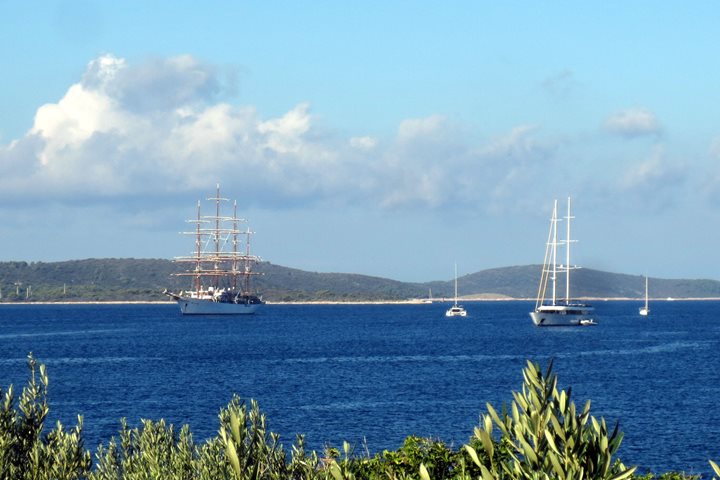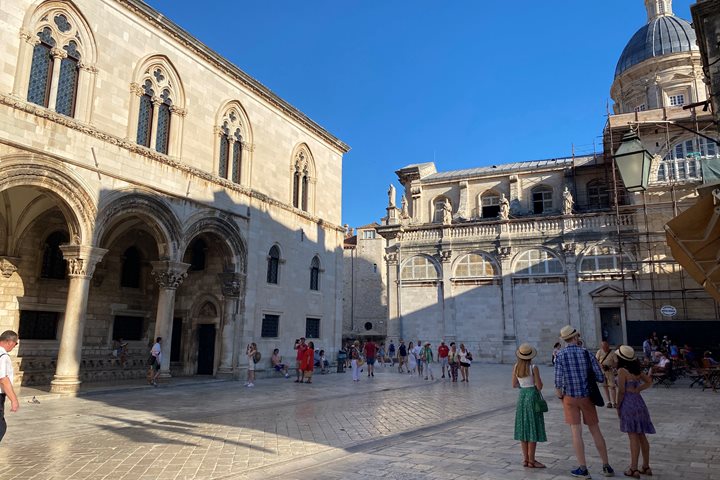We have now bid farewell to Greece and continue our journey into the fascinating country of Albania. Known to Albanians as Shqiperia, or Land of the Eagles, this mountainous country has been ruled by the Romans, the Ottoman Turks, and, in the late 20th century, a Communist dictatorship. Today, Albania is a developing democratic country littered with physical reminders of its complex history, from archaeological sites to communist-era bunkers.
Our first destination is the archaeological site of Butrint, a UNESCO World Heritage site with well-preserved remnants of the city’s 2,000-year history, from Hellenistic walls to an ornate Byzantine baptistery. A 14th- to 16th-century Venetian castle towers over the archaeological site and offers sweeping views of the surrounding countryside. On our return to the port of Sarande, we stopped to enjoy an even more stunning vista from the Ottoman-era Lekuris Castle.
This evening, following a presentation on Venice’s maritime empire and a chance to swim in the Adriatic, we had the opportunity to visit the castle of Ali Pasha at Porto Palermo. Thanks to the efforts of the Lindblad Expeditions-National Geographic team and Sea Cloud staff, this otherwise dark, abandoned castle was illuminated with tea lights, heightening the effect of truly stepping back in time. At the top of the castle, guests enjoyed a glass of wine, musically accompanied by a traditional Albanian flautist, as the sun gradually sank behind the rugged Albanian hills: a spectacular conclusion to our first day in this colorful nation.







